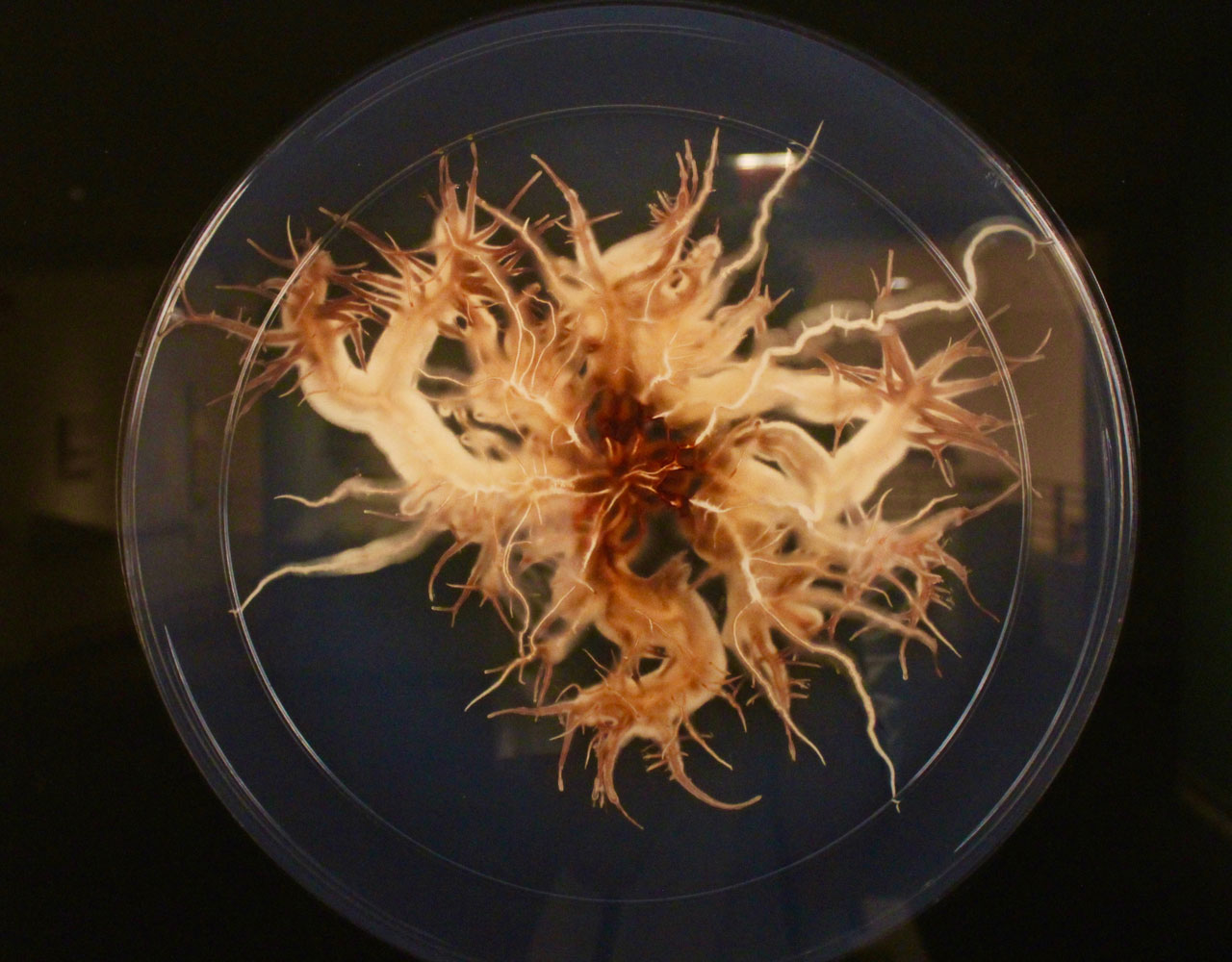La chambre des cultures, foraging in time and space is an exhibit at the Carleton University Art Gallery (CUAG), which was unveiled on Sept. 11. Artist-in-residence Annie Thibault uses fungi to explore and bridge the space between the art gallery, and the biology lab. The exhibit is part of a pilot project between CUAG and Carleton’s biology department.
In collaboration with Myron Smith, a biology professor at Carleton University, Thibault has been cultivating multiple species of fungi, an underground organism within small petri dishes.
“It is interesting [that] there is actually a lot of common ground,” Smith said. “Artists rely on mistakes and working with the outcomes of an experiment, which is exactly what we do in a biology lab.”
Mushrooms are the above ground fruiting bodies, and they are products of spore-producing fungi.
The mycelia is the larger organism that lives underground, composed of rhizomorphs, root-like structures that create web-like networks that play a vital role in ecosystems that act as a communicator between plants and animals.
“I like invisible things so this was perfect,” Thibault said.
Thibault studied science before completing a masters of fine arts at the University of Ottawa in 2016 where she became focused on mycelia.
“It has a primary intelligence, and creates a link between plants and animals,” Thibault said.
Over the past few months, Thibault spent time conducting artistic research in the lab, working with Smith filming, cultivating, and sharing materials and understandings of the organisms that fascinate them both.
“Thibault looks at shape and structure and we are more interested in the function and mechanism,” Smith said. “It is interesting how we see and work with the same organisms or objects but look at them so differently.”
The exhibit is a combination of video, photography, drawings, glass boxes filled with live fungi growing, and a small cabinet of curiosities at the back where visitors are able to examine specimens encased in Plexiglas circles under microscopes.
In the middle of the room there are six large glass boxes, each filled with mycelia and a few round pieces of wood, the primary food source for the organism.
In some, there are orange rhizomorphs formed around the wood. Others have been infiltrated with mould, creating zones of contact between the organisms, fending each other off.
Heather Anderson, curator of the exhibit, said that Thibault’s method of working with living material more so than traditional mediums is part of what makes this exhibit so unique.
“We weren’t sure what the result would be,” Anderson said. “As with any experiment you can’t bank on the outcome, you always have to re-strategize.”
According to Anderson, Thibault will also be showing the process behind her research as part of her work. Throughout the next few months, she will switch out components as she makes new discoveries.
The exhibit will be on display until Dec. 3.
Photo by Aaron Hemens






